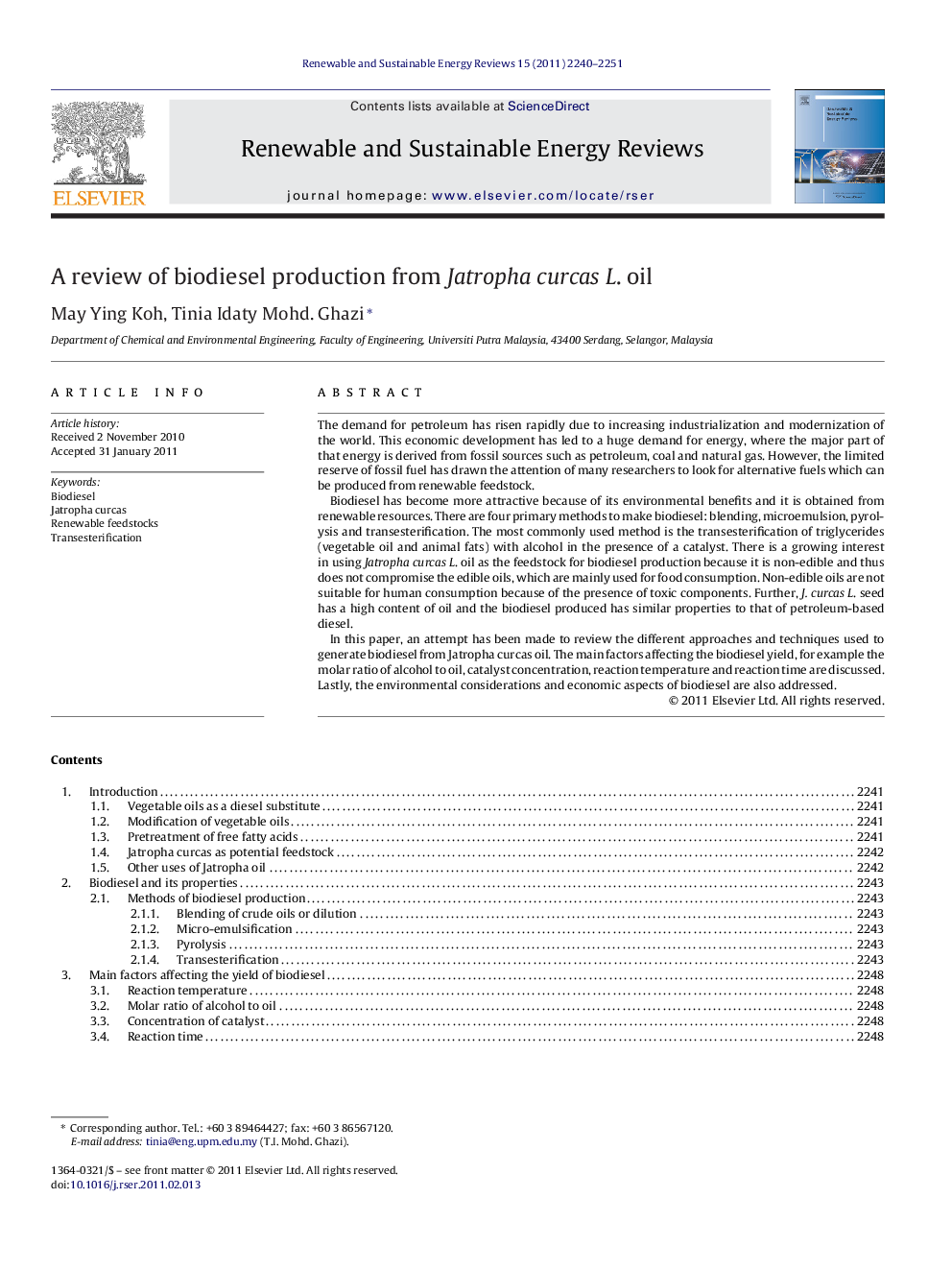| Article ID | Journal | Published Year | Pages | File Type |
|---|---|---|---|---|
| 1751198 | Renewable and Sustainable Energy Reviews | 2011 | 12 Pages |
The demand for petroleum has risen rapidly due to increasing industrialization and modernization of the world. This economic development has led to a huge demand for energy, where the major part of that energy is derived from fossil sources such as petroleum, coal and natural gas. However, the limited reserve of fossil fuel has drawn the attention of many researchers to look for alternative fuels which can be produced from renewable feedstock.Biodiesel has become more attractive because of its environmental benefits and it is obtained from renewable resources. There are four primary methods to make biodiesel: blending, microemulsion, pyrolysis and transesterification. The most commonly used method is the transesterification of triglycerides (vegetable oil and animal fats) with alcohol in the presence of a catalyst. There is a growing interest in using Jatropha curcas L. oil as the feedstock for biodiesel production because it is non-edible and thus does not compromise the edible oils, which are mainly used for food consumption. Non-edible oils are not suitable for human consumption because of the presence of toxic components. Further, J. curcas L. seed has a high content of oil and the biodiesel produced has similar properties to that of petroleum-based diesel.In this paper, an attempt has been made to review the different approaches and techniques used to generate biodiesel from Jatropha curcas oil. The main factors affecting the biodiesel yield, for example the molar ratio of alcohol to oil, catalyst concentration, reaction temperature and reaction time are discussed. Lastly, the environmental considerations and economic aspects of biodiesel are also addressed.
